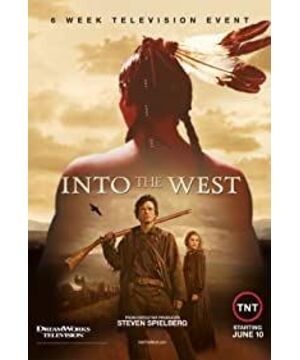With the purpose of understanding the history of the development of the western United States, I watched the 9-hour 6-episode American TV series "Into the West" produced by HBO and the more than 2 hour movie "Bury My Heart at Wounded Knee), both works objectively and impartially reproduce history, faithfully reflecting the invasion and destruction of Indians in American history. The Wind and Clouds of the West tells a century of Western history in the United States from 1800 to 1900. "Return to Wounded Knee Valley" only reflects the history of the Wounded Knee Massacre (Wounded Knee Massacre) massacre of Indians in 1890.
The Western Development of the United States is a pioneering history of the glory and humiliation, glory and dreams of the American settlers in the west. Some people say that this is a history of conflict and friction between two civilizations, whites and Indians, and a history of two completely different cultural conflicts and exchanges and fusions. They strongly disagree with this statement. The tide of the world is mighty, and those who obey will prosper, and those who oppose it will perish. Although the United States does not approve of the brutal and inhuman bloody means of subjugating the Indians, the conflict between the whites and the Indians is obviously inevitable when they collide. In fact, it is a conflict between civilization and barbarism, advanced and backward. Just as the Western powers used gunboats to open the gates of the Qing Dynasty, you do not keep pace with the world, do not accept the universal value recognized by the overwhelming majority, do not choose to integrate and identify, but try to compete with your own strength, the end result is naturally eliminated or even eliminated wipe out. In the history of China, the nomadic peoples around the Central Plains conflicted with the farming peoples of the Central Plains many times. Although the nomads representing backward and even barbaric can conquer the Central Plains by force, the farming culture of the Central Plains represents the advanced productive forces at that time. Ethics and other civilizations are incomparable and unmatched by nomads. Therefore, the result is nothing more than that nomads either actively choose to accept the assimilation of the Central Plains civilization (such as Xianbei, Li Tang), or passively accept and be assimilated (such as Manchu) , Or dissimilarization will eventually be expelled from the Central Plains (such as Yuan Meng). In the face of advanced culture and civilization, in the face of universal and common values widely recognized and accepted by the world, how to choose is so important to a nation and a country. As the two films reveal, when Americans armed by industrial civilization begin to move westward, it is the beginning of the Indians’ nightmare. In the face of a powerful foreign civilization, the result of the Indians’ confrontation will only be helplessness and pain, and gradually lose. The land was moved and chased, step by step from the original brave and proud Great Plains Indian tribe, it was gradually slaughtered by the whites.
The "Wounded Knee River Massacre" marked the end of the 300-year Indian War. This was also the last massacre of Indians in the United States. When Columbus came to the American continent, there were about a few million Indians in North America. In 1900, there were only about 250,000 left, most of whom died of infectious diseases. Indian talents were admitted as legal citizens by the United States in 1924.
The ending subtitles of "Return to the Knee" show that after more than 100 years, the U.S. Supreme Court ruled that the seizure of Montenegro in 1876 violated the agreement signed with the Sioux. Justice Blakemon said, "Looking back on the history of our government. No dishonorable transaction has been more shameless or worse than this one."
Both the two works and the American reality show respect for history, reflection on crime, and a responsible responsibility. Their attitude of remembering history is not for remembering hatred, but for the courage to take it up. It is obviously totally different from our past education that "forgetting history means betrayal". German Chancellor Brandt knelt in front of the monument to the Jewish victims and prayed: "God forgive us, and may the suffering souls find peace." This attitude towards history is awesome.
In the past we knew that the Black Hills area of South Dakota was famous because the Black Hills was also known as Rushmore. The President’s Hill was carved with Washington, Jefferson, Roosevelt, and Lincoln four about 18 meters high. The portrait of a former president who has made important contributions to American history. As a national symbol of the United States, the portrait of this place attracts millions of tourists every year. Watching the film, we know that behind the statue of the president there is a tragic and bloody history of the massacre against Indians. On another peak of the Knee River in Black Mountain, southwest of President Mountain, there is a statue of an Indian leader and warrior Crazy Horse designed to be 195 meters high and 172 meters wide, but this sculpture only completes a face. Attracted many tourists to come to visit. It's a pity that I haven't been to these two places in the United States many times. I don't know that the next time I go is the year of the monkey.
View more about Into the West reviews











